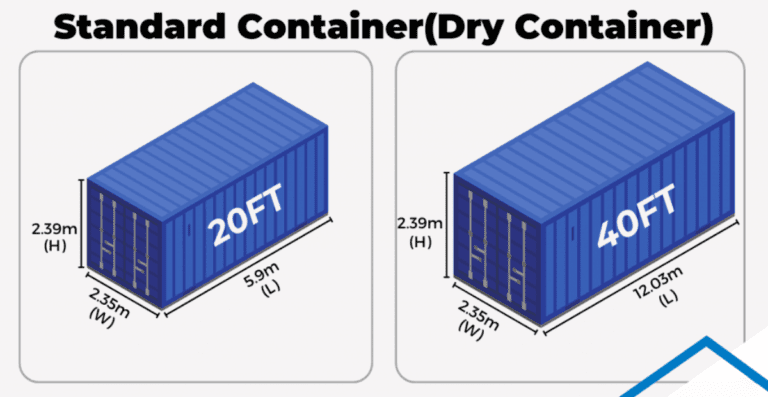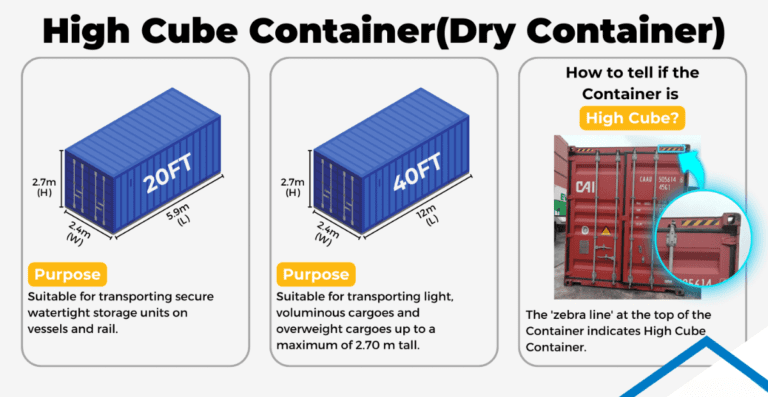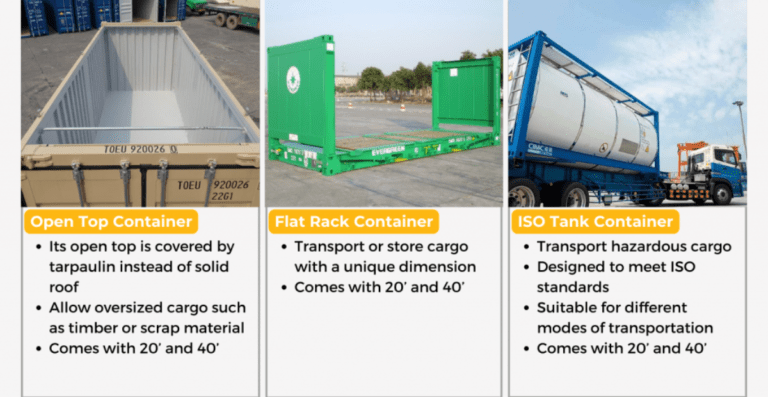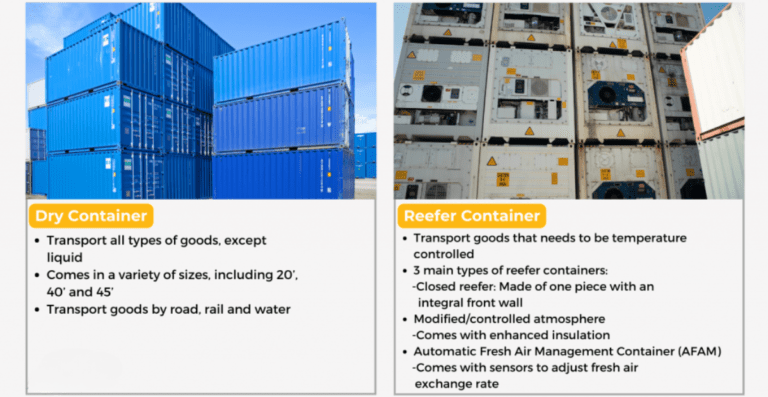Because shipping containers are adaptable and cost-effective, they are becoming increasingly used in a variety of industries for storage, transportation of goods, housing, and even pop-up businesses. Shipping container demand has increased as international trade has expanded. However, it is critical to select the appropriate container size for your needs.
The two primary sizes are the 20ft and 40ft shipping containers, and they come with varying specifications in terms of payload, storage space, and weight constraints, based on our significant expertise in dealing with our clients. In this article, we’d like to inform our readers about the most widely used containers.
The Significant Differences Between 20ft and 40ft Standard Containers

Size Comparison of Common Containers
Dimensions of a 20-ft container: 5.9m (L) x 2.35m (W) x 2.39m (H).
Weight of Tare: 2,300 kg
Gross weight limit: 25,400 kg
Dimensions of a 40-ft container: 12m (L) x 2.35m (W) x 2.39m (H).
Weight of Tare: 3,750 kg
The maximum gross weight is 26,300 kg.
The Significant Differences Between 20ft and 40ft High Cube Containers

High Cube Containers are taller than Standard Shipping Containers, allowing for more storage of commodities such as furniture and machines. Look for the “Zebra Line” label on the top left and right corners to identify a High Cube Container. This marking assists port operators in recognizing the container type and handling it efficiently with cranes and RTGs.
Size Comparison of High Cube (HC) Containers 20ft HC 5.9m (L) x 2.4m (W) x 2.7m (H) container dimensions
Weight of Tare: 2,315 kg
30480 kg is the maximum gross weight.
Dimensions of a 40ft HC Container: 12m (L) x 2.4m (W) x 2.7m (H)
Weight of Tare: 3,940 kg
32,500 kg is the maximum gross weight.
Other Shipping Container Types You Should Know



